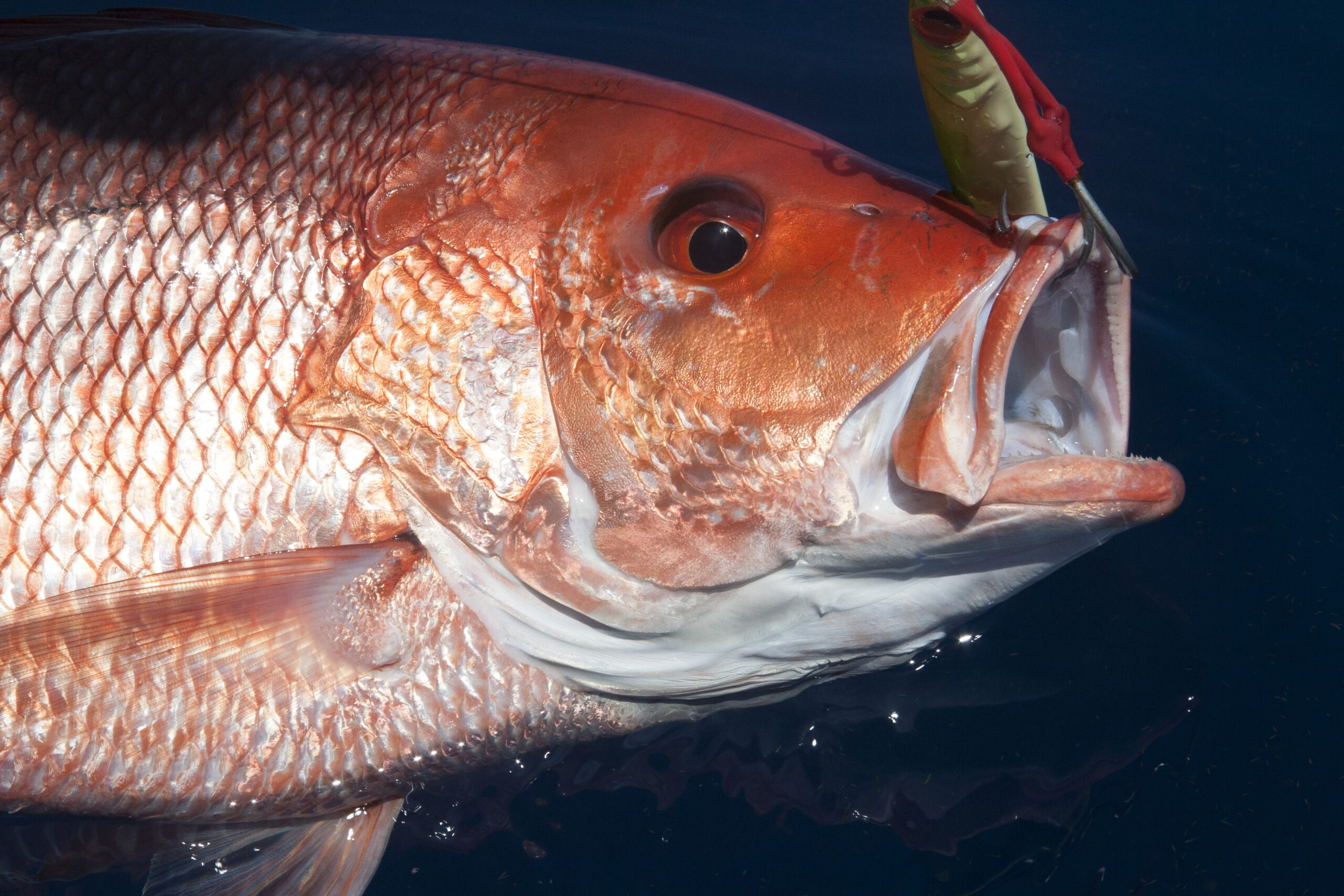ASA Red Snapper Letter On June 28, 2022, the National Oceanic And Atmospheric Administration (NOAA) released a proposed rule to “calibrate” state recreational red snapper catch data to the federal Marine Recreational Information Program (MRIP) system and modify annual catch limits (ACLs) for Gulf red snapper. As with nearly all things Gulf red snapper, this proposed rule has attracted a lot of attention from recreational fishing advocates and members of Congress.
Background
A few years ago, red snapper management in the Gulf reached a low point with a 3-day recreational harvest season in federal waters, despite an abundance of red snapper. The short season created a domino effect, leading to NOAA and the Gulf of Mexico Fishery Management Council (Council) delegating red snapper management of the private recreational sector to the Gulf states, which improved access. The Gulf states created data collection programs designed to track red snapper harvests against their federally set quotas for the purpose of setting seasons and bag limits based on local needs. Previously, MRIP tracked recreational red snapper landings in all states, except Texas, despite documented shortcomings in MRIP’s ability to track recreational landings in season, especially for offshore species like red snapper. Allowing state management has improved opportunities for recreational anglers to harvest red snapper, increased accountability through better data collection, and fostered trust in the management process.
After several years of piloting state management, the program was officially approved in 2020. At that time, NOAA insisted that red snapper harvest data collected by the states must be calibrated (or converted) so that it could be compared to MRIP data. Despite longstanding concerns over the efficacy of MRIP in monitoring red snapper harvest, the very same system the state surveys were designed to move away from is being used to make “apples to apples” comparisons so that state quotas, which are based on MRIP, could be adjusted to account for the state data collection systems. Congress recently appropriated $2 million for determining how to best handle calibrations of state and federal recreational data in the Gulf of Mexico, but in the meantime, NOAA is proceeding with MRIP as the baseline with which to compare the state surveys.
In addition to uncertainty around angler catch estimates, concerns have also been raised over the years about the estimates NOAA has been using of how many red snapper are in the water. To address the need for better science on red snapper populations in the Gulf, Congress also provided $10 million for independent research (led by scientists outside of NOAA) to estimate the abundance of red snapper in the Gulf of Mexico. A multi-disciplinary team of scientific experts was formed and conducted a comprehensive study of red snapper throughout the Gulf of Mexico known as the Great Red Snapper Count.
What does the proposed rule do?
NOAA’s proposed rule provides a slight increase in catch limits for red snapper. The overall recreational catch limit would increase by a mere 147,000 pounds, a low figure when considering that the impetus for reconsidering catch limits was the Great Red Snapper Count reporting there are 118 million red snapper aged 2 years or older in the Gulf of Mexico. This count is about three times more than previously estimated.
The proposed rule also includes ratios that would convert the state red snapper harvest data collected by each state to MRIP and adjust state quotas based on those ratios. The impacts of this calibration for Florida and Louisiana are minimal, as their quotas increase slightly, and Texas’ does not change at all. The results for the other Gulf states, however, are dire: Alabama’s quota would be cut roughly in half and Mississippi’s would decrease by more than 60%. These cuts would inevitably result in significantly shorter seasons and have negative economic impacts on the states.
The concept of calibration isn’t necessarily a bad thing, but many have questioned whether the proposed calibration ratios are based on the best available science, as required under the Magnuson-Stevens Conservation and Management Act. One thing that is not being questioned in that pushing these ratios forward would have severe negative economic impacts to Alabama and Mississippi.
Congress and ASA Weigh In
On July 29, 2022, U.S. Senator Roger Wicker (R-Mississippi), Congressman Garrett Graves (R-Louisiana) and a bipartisan group of 36 additional members of Congress wrote to U.S. Commerce Secretary Gina Raimondo in response to the proposed rule, urging NOAA to allow status quo management to continue and to fully integrate the best available science into management decisions. The letter expresses frustration with the lack of incorporation of the Great Red Snapper Count, and the failure to resolve the differences in the state data collection programs and MRIP, as recommended by both the Council’s scientific advisors and a 2021 National Academy of Sciences report to Congress. The letter notes that NOAA “failed to find an effective solution and is not making decisions based on the best available science while refusing to appropriately integrate the new [state] data.”
U.S. Senator Roger Wicker (R-Mississippi) sent an additional letter to NOAA Administrator Dr. Richard Spinrad, outlining concerns from Mississippi and admonishing the agency for creating a proposed rule that is “… based on bad science, and does a disservice to the public.” Senator Wicker noted that the proposed calibration method unfairly penalizes Mississippi because of questionable MRIP data, even when Mississippi’s NOAA-certified data collection system, Tails and Scales, provides a near census of red snapper catch and effort during the open season. Senator Wicker also questioned the need for calibration, noting that the West Coast states were allowed to transition away from MRIP without calibrating.
ASA also wrote to NOAA on the proposed rule, calling on the agency to “get the state calibrations right” before its implementation. We believe that NOAA should work collaboratively with the states so that both anglers and states trust the calibration process and outcomes. This is critical for the continued success of Gulf red snapper state management and the fishery’s future as a whole.
The future of Gulf red snapper management is up in the air, and the outcome has implications for other fisheries in the region and beyond. ASA appreciates the many Members of Congress, led by Sen. Wicker and Rep. Graves, who have weighed in on this issue in support of sound science and state management. ASA will continue to engage with the Gulf Council, NOAA and Congress to support state management and ensure that red snapper remain sustainable and accessible to the public.
If you would like to learn more about ASA’s Gulf red snapper efforts, contact, Martha Guyas, ASA Southeast Fisheries Policy Director.
Share This Article, Choose Your Platform:
Recent Posts



